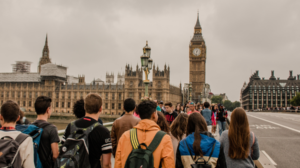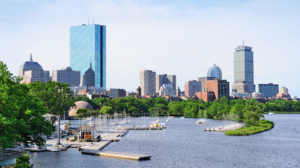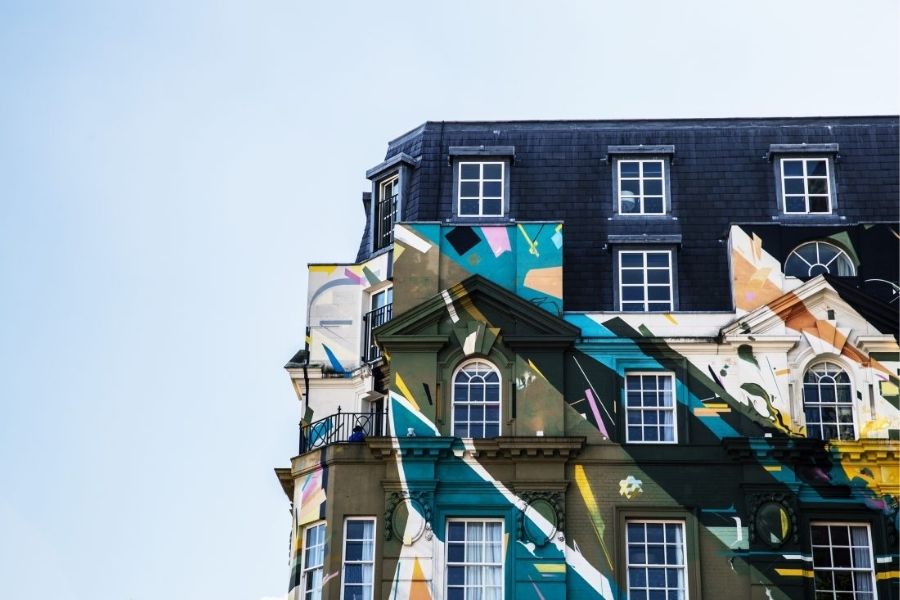Imagine an art gallery filled with works made entirely by locals, free to the public, and located directly on city buildings. This is not a utopian ideal but something which can be witnessed in emerging communities of street artists in urban centers around the world. Graffiti and public art, while often seen in a negative light, can be powerful sources of artistic influence and creativity right in the very heart of a city.
Arriving in London helped me contextualize my knowledge of street art and urban culture which I’d had primarily from my experiences in my home city of Boston. London, in particular, presents a monumental mess of intertwined communities to explore with an equally sprawling diversity of cultures and social groups to familiarize myself with.
There is no doubt that artistic expression can play an important role in uniting diverse groups of peoples and entire communities. Creative output in the form of the fine arts, live music, and works of literature often define cultures and can play an important part in helping a community find an identity.
While usually we think of art as being found in institutions such as museums, exhibitions, and concert halls, it often manifests in surprising places. Graffiti artists, buskers, etc. provide street level outlets of creativity. They improve the quality of life at a ground level, and provide a sidewalk presence which plays an important part in creating a city’s unique feel and character.
In addition to being the visible part of communities which lie just beneath the surface of a city. Communities of youths involved in live music scenes or other “counter-culture” like activities. Which often provide a large part of an urban center’s social, cultural, and artistic identity.
It’s interesting to think of the effects that a more lenient approach to graffiti and street art can have. Considering the implication that leniency does not lead to total degradation towards excessive vandalism. Instead providing a degree of vibrancy to street-level life and a boon to the kinds of communities which boost creative output, social identity, and cultural development.
In London there is a long and fairly well respected history of street art and underground communities in general. With London venues and clubs being key in the development of influential music scenes such as punk, reggae, ska, hip hop, and various forms of electronic dance music.
While in specific regards to street art, British artist Banksy has achieved a degree of worldwide fame and acclaim which dwarfs that of many conventional artists. Originating from the underground scene in Bristol but nonetheless making his mark in London as well.
Presenting work with anti establishment themes covering a wide range of subjects often with a focus on social reform. Banksy’s art is best characterized as graffiti, spray painted and stenciled directly onto infrastructure or buildings and existing as a part of the city, a humble nature which is now transcended by Banksy’s skyrocketing popularity.
His art and fame are proof of the value which street art can have. With Banksy presenting some of the most meaningful and significant works of contemporary art all in the form of “graffiti” which many would be prone to disregard out of hand.
So far, from my stay in London, aspects such as the street markets, eye-catching graffiti, and curbside musicians have brought me the most joy. And have further made a city which is already dense and sprawling in its own right, seem even more intricate and interesting.
Morning walks are considerably improved by the hubbub of temporarily assembled markets filled with vendors plying their wares. These sites provide a living reminder of London’s cultural diversity through the various nationalities and languages on proud display.
Being able to hear live music on the streets is not only an added bit of entertainment in my day but also an example of London’s creativity as well as another example of it’s diversity. With every day presenting a different type of performance often from a wide variety of genres and musicians.
And finally, graffiti and street art, which in many ways frames London’s nightlife, with its presence on closed store shutters by night and transforming the London streets by day. After dark, stores close and pubs and clubs fill with patrons, the creative expression of London’s youth forms a backdrop for nighttime activities.
From my perspective as a Bostonian, this kind of sidewalk presence and grassroots identity is the city’s biggest weakness. Elsewhere in America such as in New York City, the sidewalk hubbub of street vendors, busking musicians, grifters, chess hustlers, street performers, etc is a defining part of the identity of many neighborhoods. Similarly across Europe, cities like Barcelona and Amsterdam are also very proud of the eclectic identity many of their neighborhoods enjoy.
Yet in Boston this kind of activity is much less prevalent and the sidewalks stay cleared for pedestrians. The lack of a large graffiti culture such as those found in Europe is only a small aspect of this issue, yet one still worth considering.
This is something which I have come to realize even more acutely from my time so far in London. The city exists as its own incredibly complex and exceedingly interesting entity with many quirks and imperfections which give it character.
Looking towards the months ahead, I hope to get to know London even better. Something which ideally will let me appreciate my own home city even more and positively influence how I view the communities and cultures which mix and mingle in any of the urban centers I have the pleasure of visiting.










